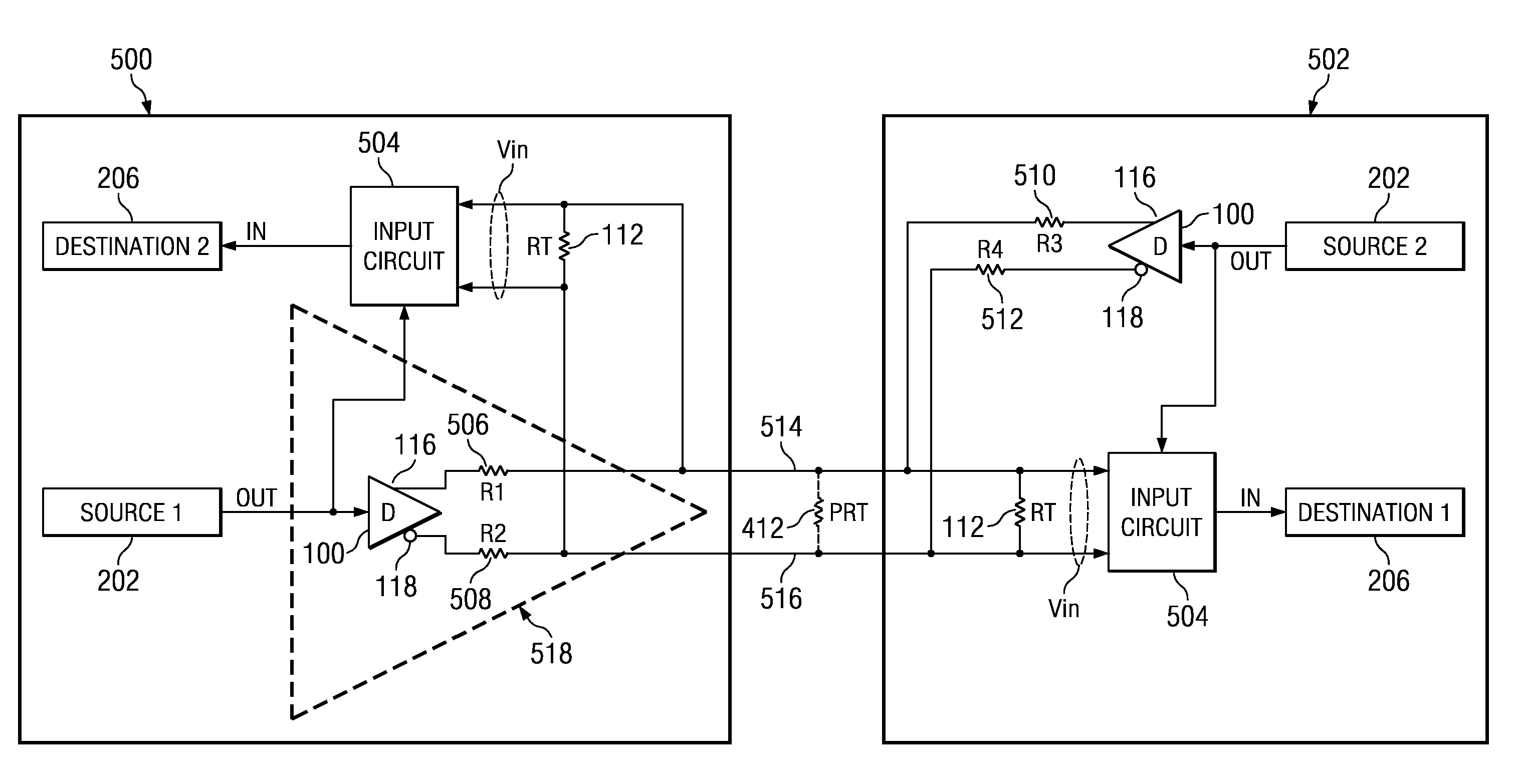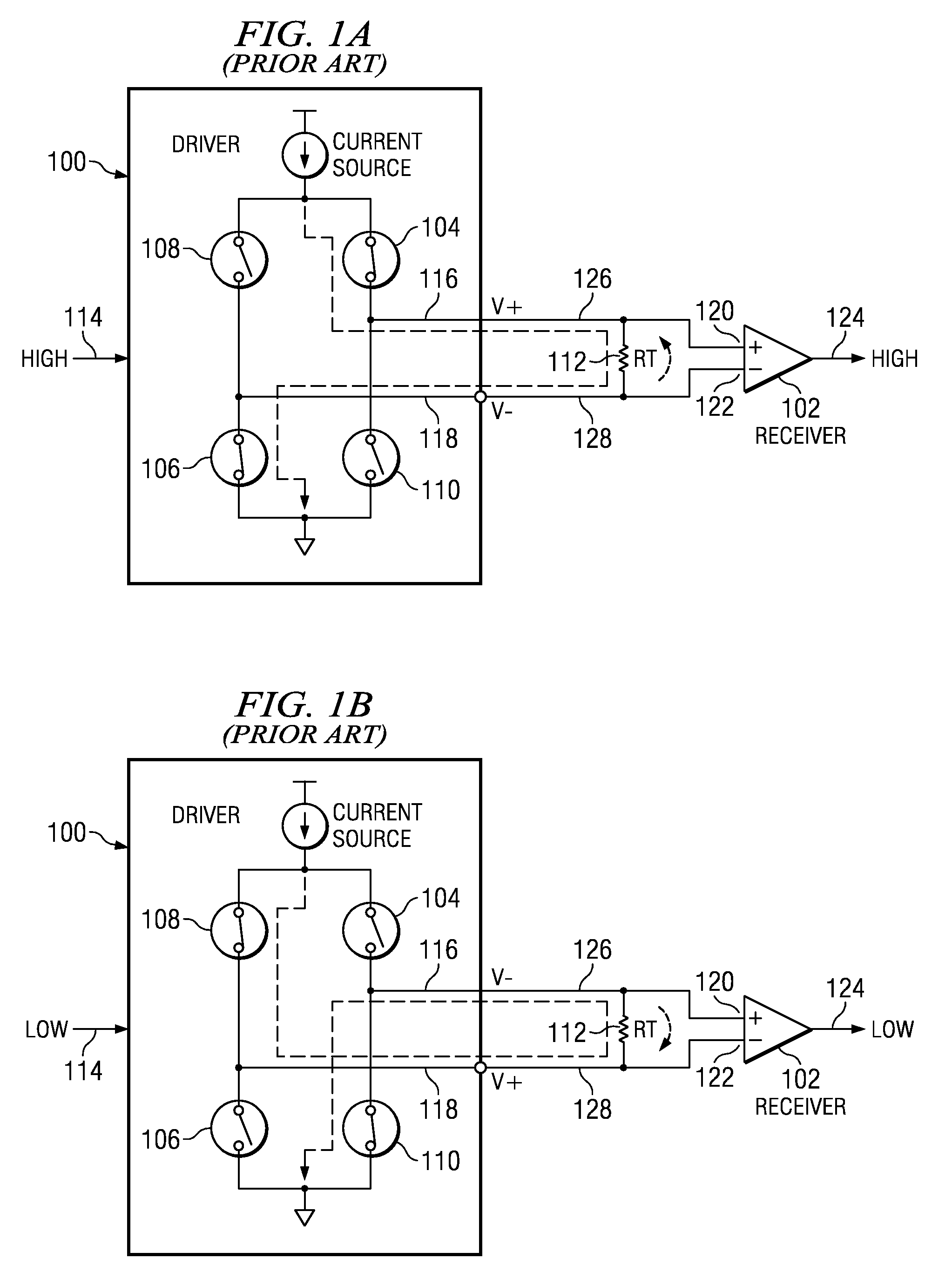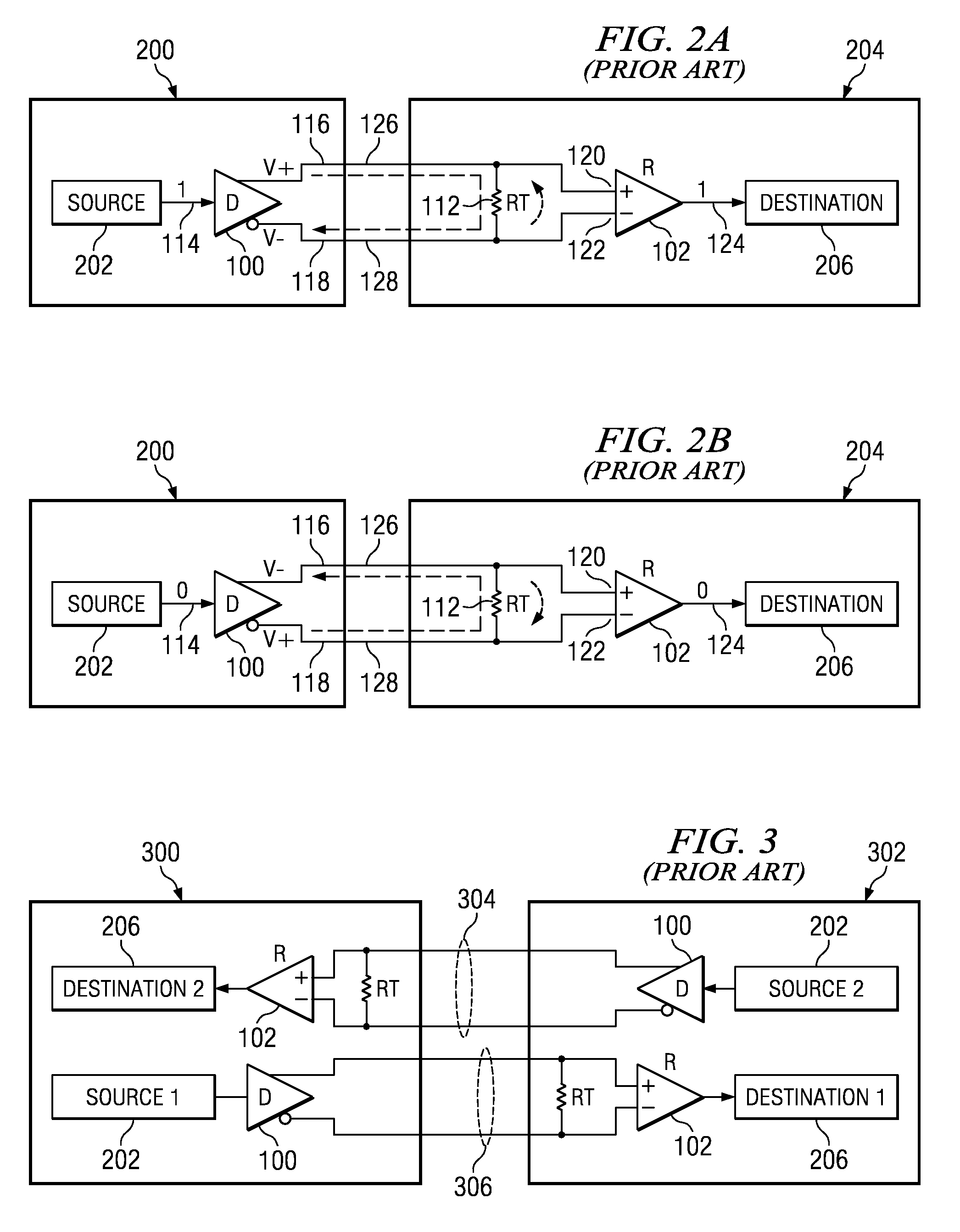LVDS input circuit with connection to input of output driver
a technology of output driver and input circuit, which is applied in logic circuit coupling/interface arrangement, logic circuit coupling/interface with bidirectional operation, and pulse technique, etc., can solve the problem of double the number of connection requirements between a sending circuit and a receiving circui
- Summary
- Abstract
- Description
- Claims
- Application Information
AI Technical Summary
Benefits of technology
Problems solved by technology
Method used
Image
Examples
Embodiment Construction
[0044]FIGS. 1A and 1B illustrate the connection between a conventional LVDS driver 100 and receiver 102. The driver has an input 114, a non-inverting output 116 and an inverting output 118. The driver is comprised of transistors, indicated as switches 104-110, that are controlled by the input 114. The receiver has a non-inverting input 120, an inverting input 122, and an output 124. A first signal path connection 126 is formed between driver output 116 and receiver input 120. A second signal path connection 128 is formed between driver output 118 and receiver input 122. A termination resistor 112 is placed across the receiver inputs 120 and 122.
[0045]In FIG. 1A, a logic high is input to the driver. In response, transistors 104 and 106 are turned on and transistors 108 and 110 are turned off. In this arrangement current flows from the driver current source through transistor 104, termination resistor 112, and transistor 106. The direction of the current flow develops a voltage across...
PUM
 Login to View More
Login to View More Abstract
Description
Claims
Application Information
 Login to View More
Login to View More - R&D
- Intellectual Property
- Life Sciences
- Materials
- Tech Scout
- Unparalleled Data Quality
- Higher Quality Content
- 60% Fewer Hallucinations
Browse by: Latest US Patents, China's latest patents, Technical Efficacy Thesaurus, Application Domain, Technology Topic, Popular Technical Reports.
© 2025 PatSnap. All rights reserved.Legal|Privacy policy|Modern Slavery Act Transparency Statement|Sitemap|About US| Contact US: help@patsnap.com



